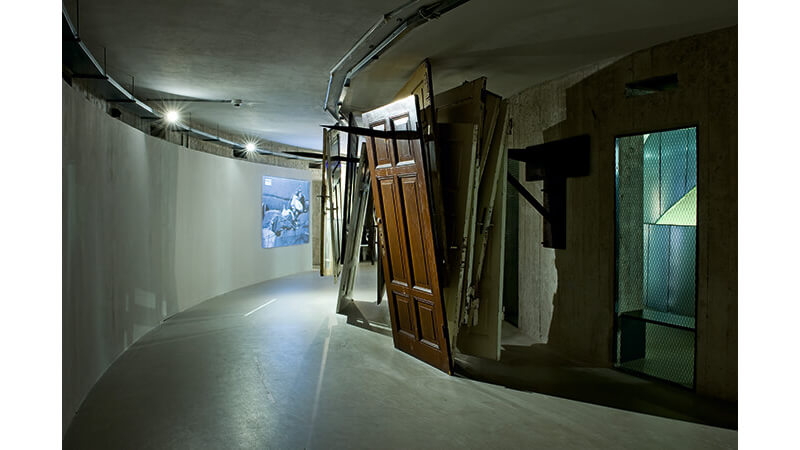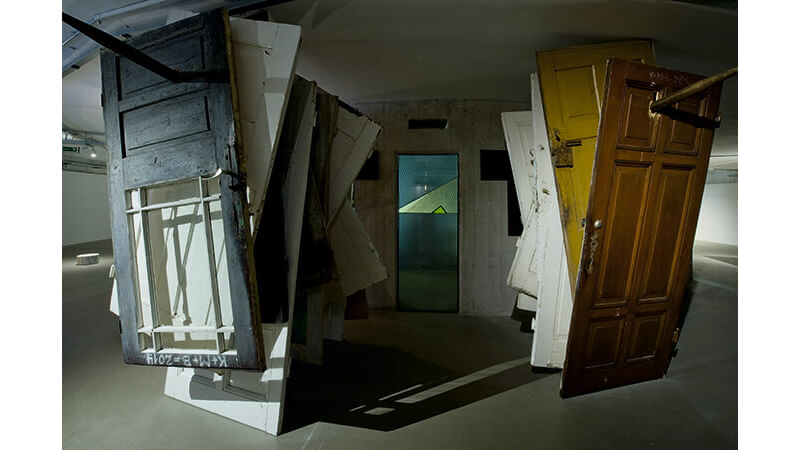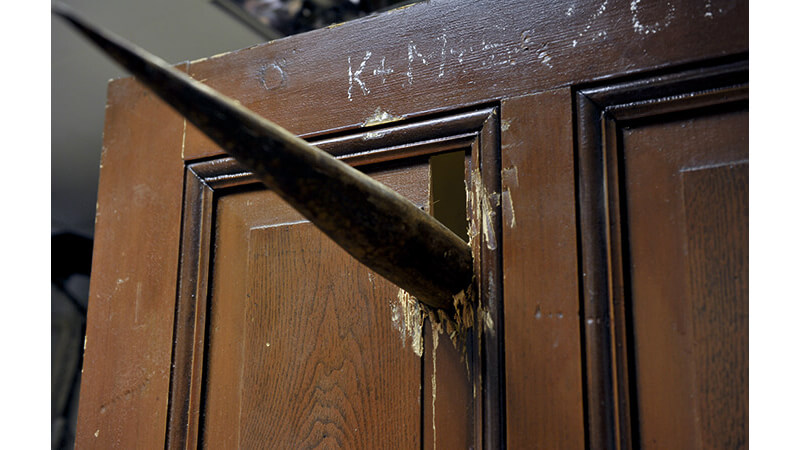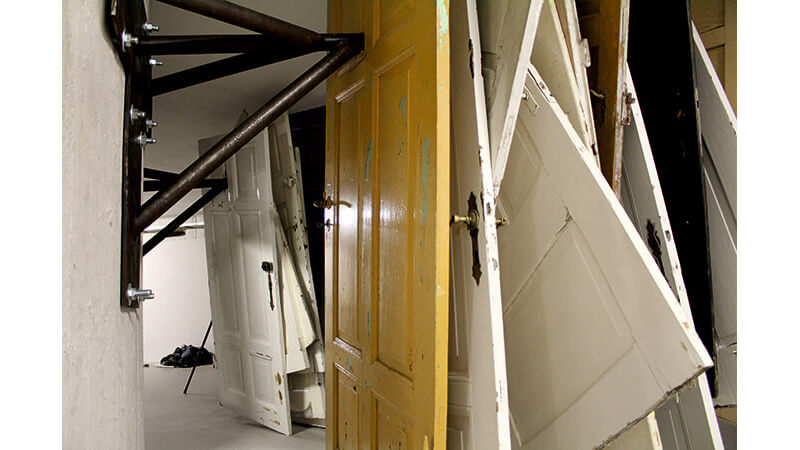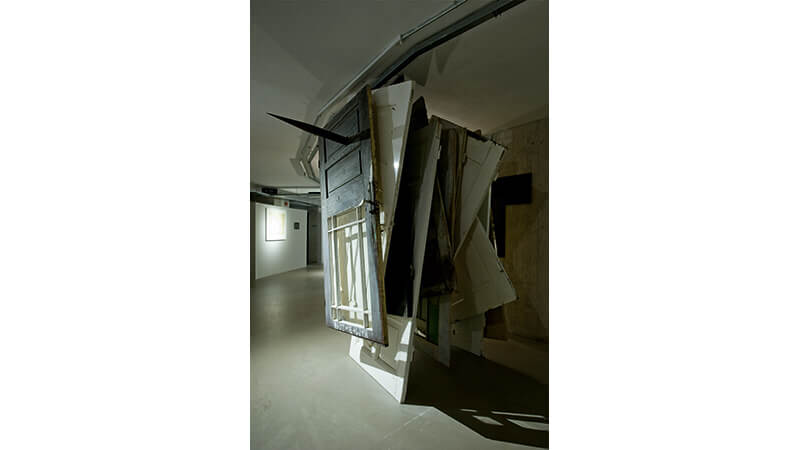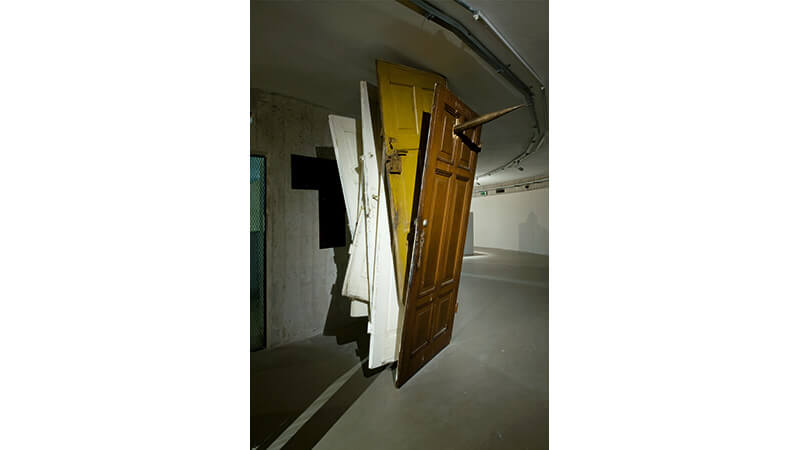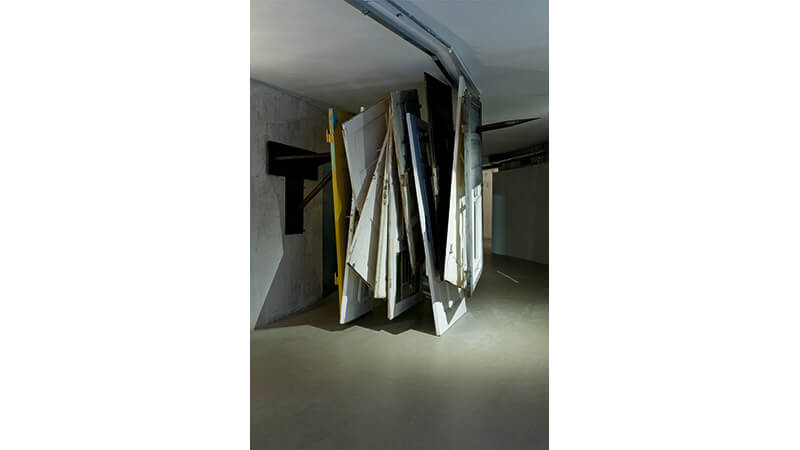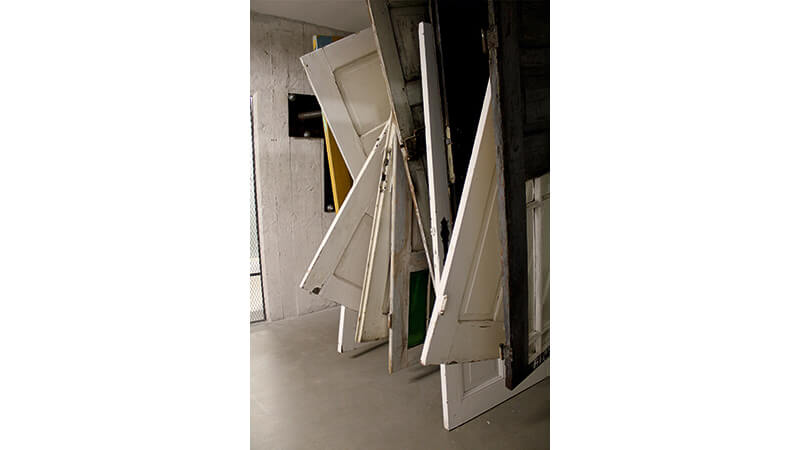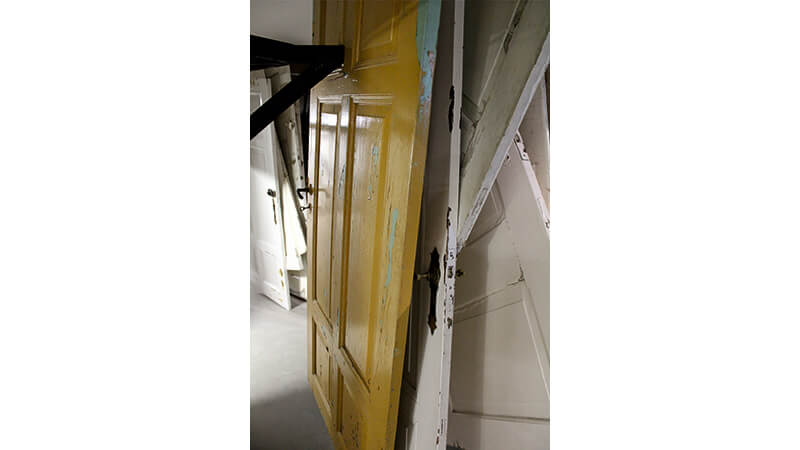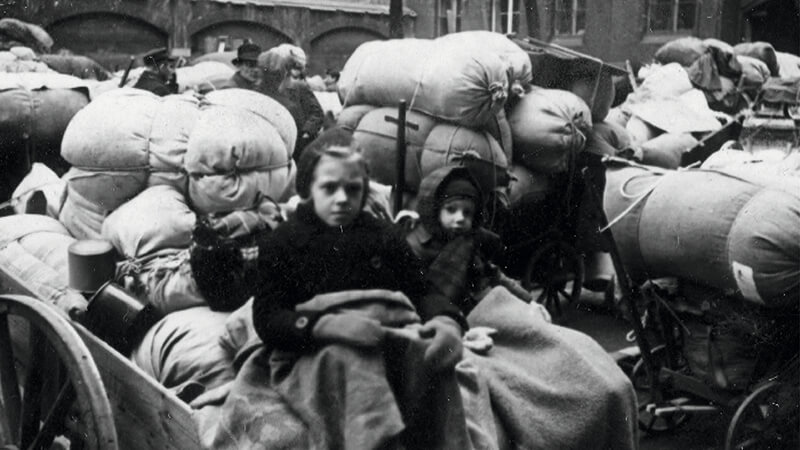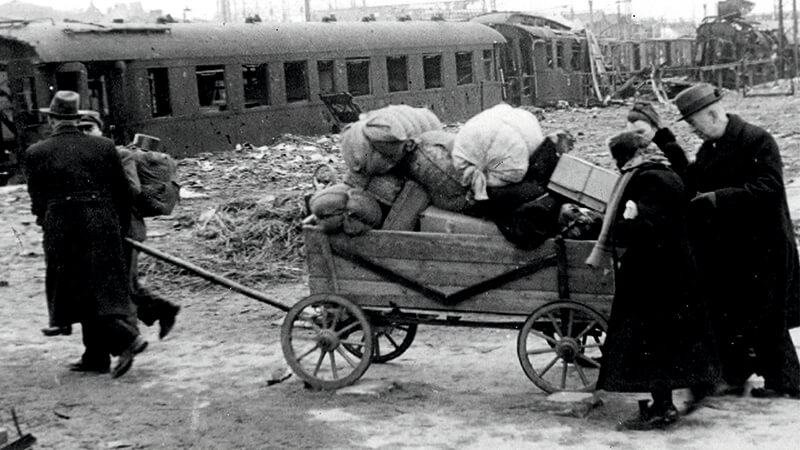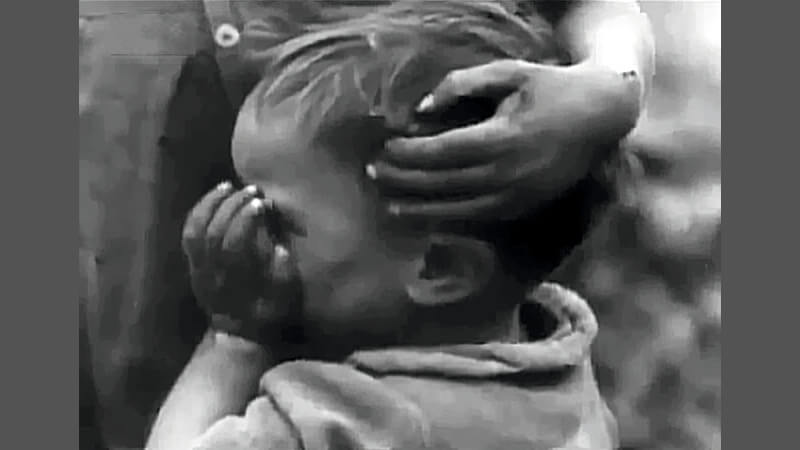Heimatvertriebene (expelled from the native lands)
| title: | Heimatvertriebene [expelled from the native lands], post-German door with: Lędyczek (German: Landeck), Sopot (German: Zoppot), Piłaki Wielkie (German: Gross Pillacken), Pawłowice (German: Pawlowitz), Wrocław (German: Breslau), Lębork (German: Lauenburg), Opole (German: Oppeln). |
| year: | 2014 |
| dimensions: | 400/300/300 cm |
| technique: | installation with video, steel structure, video with sound, time: 13 min / loop, archival materials |
| in the collection: | NOMUS New Museum of Art in Gdańsk |
| description: | The installation consists of two steel structures for attaching to the wall, 220 cm and 270 cm,
19 wooden original doors, a video film with sound - compilation of archival materials containing information on history in the pl/en version. The German term Heimat is close to the Polish fatherhood, means home, native land. In the legal sense of Heimatrecht, - it is the right to family land, that is why Heimat defined and defined specific spatial and temporal conditions as well as accurate legal and social relations. Installation from video, entitled: - Heimatvertriebene [expelled from the motherland] is parallel to the situation of forced expulsions of ethnical inhabitants of the towns and villages, from eastern Poland to so-called Regained Territories in the years from 1944 - 1950. The notion of Heimat is the starting point in this case. The installation is an attempt to define a literal loss of land, a family home, through the use of brutal force, violence (the embodiment of which was the Red Army). The symbolic reference to the loss of a house is the abandoned, wooden, internal door. The original German remains, unwanted "foreign" property were collected in 2014 from post-German houses (now Polish), from territories intensified migration of German populationin the post-war years, from: East Prussia (German Ostpreußen), Pomerania (German: Pommern), Warta Land (German Wartheland), Silesia (German: Schlesien), Lower Silesia (German: Niederschlesien). The video that accompanies the installation is a compilation of black and white frames, archival photos showing the escape of Germans from Poland. The picture is complemented by a moving sound. |
© Dorota Nieznalska 2009-2023 | privacy policy
website implementation: Brandrei.com
